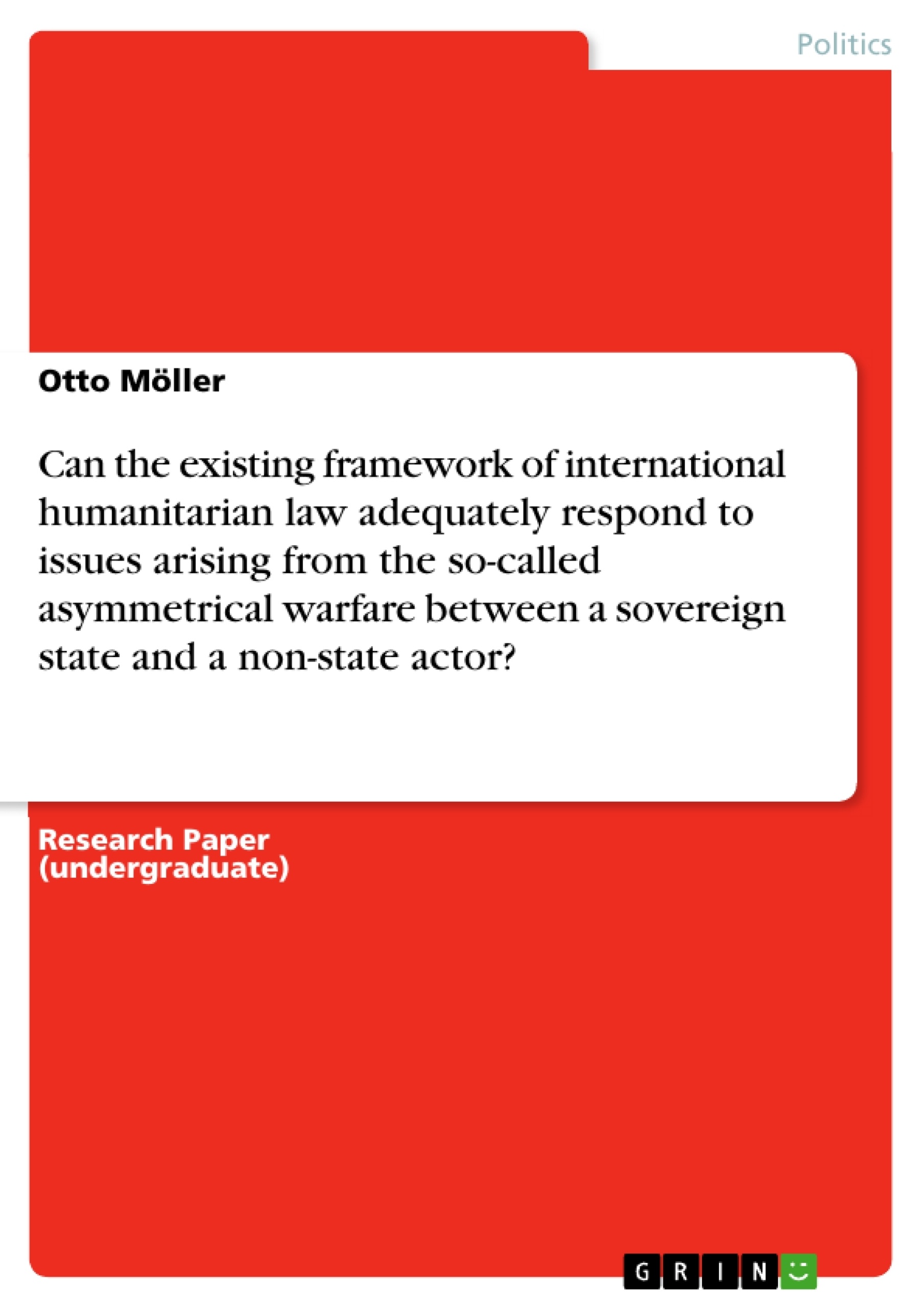The use of drones opens a new chapter in the law of armed conflict (LAC) and International humanitarian law (IHL). The hypothetical scenario for the sake of argument will be: An Al Qaida leader who has been taking part in combat is found in the streets of Kabul. He is surrounded by civilians, and he is wearing civilian clothing himself and is not currently involved in combative activities. A targeted killing through a drone strike is possible but would bring civilian causalities with it. This case brings with itself several legal issues, which will be explored in this paper.
Inhaltsverzeichnis (Table of Contents)
- Introduction
- Issue
- Regulatory Legal Frame Work
- Application
- Conclusion
- Bibliography
Zielsetzung und Themenschwerpunkte (Objectives and Key Themes)
This document explores the challenges posed by asymmetric warfare to the established framework of international humanitarian law (IHL). It delves into the complexities of regulating armed conflicts between sovereign states and non-state actors, particularly in the context of drone warfare and targeted assassinations.
- The adequacy of IHL in addressing asymmetric warfare
- The legal implications of targeted killings by drones
- The legal status and rights of non-state actors in armed conflict
- The distinction between combatants and civilians in the context of asymmetric warfare
- The application of IHL principles to modern warfare practices
Zusammenfassung der Kapitel (Chapter Summaries)
- Introduction: The introductory chapter sets the stage by highlighting the relevance of IHL in contemporary armed conflicts. It introduces the concept of asymmetric warfare, where parties possess significantly different capabilities and motivations.
- Issue: This section delves into the complexities of targeted assassinations, particularly the use of drones, in the context of asymmetric warfare. It raises legal issues surrounding the distinction between combatants and civilians, and the potential for civilian casualties in drone strikes.
- Regulatory Legal Framework: This chapter examines the existing IHL framework and its limitations in addressing the unique challenges posed by asymmetric warfare. It discusses the legal status of non-state actors and the applicability of IHL to their actions.
- Application: This chapter analyzes specific legal challenges and issues related to the use of drones and targeted killings. It examines the legal implications of this modern warfare practice and its impact on IHL.
Schlüsselwörter (Keywords)
The text focuses on the key concepts of international humanitarian law, asymmetric warfare, drone warfare, targeted killings, non-state actors, combatants, civilians, collateral damage, and the legal status of actors in contemporary armed conflicts.
- Arbeit zitieren
- Otto Möller (Autor:in), 2017, Can the existing framework of international humanitarian law adequately respond to issues arising from the so-called asymmetrical warfare between a sovereign state and a non-state actor?, München, GRIN Verlag, https://www.grin.com/document/373378



